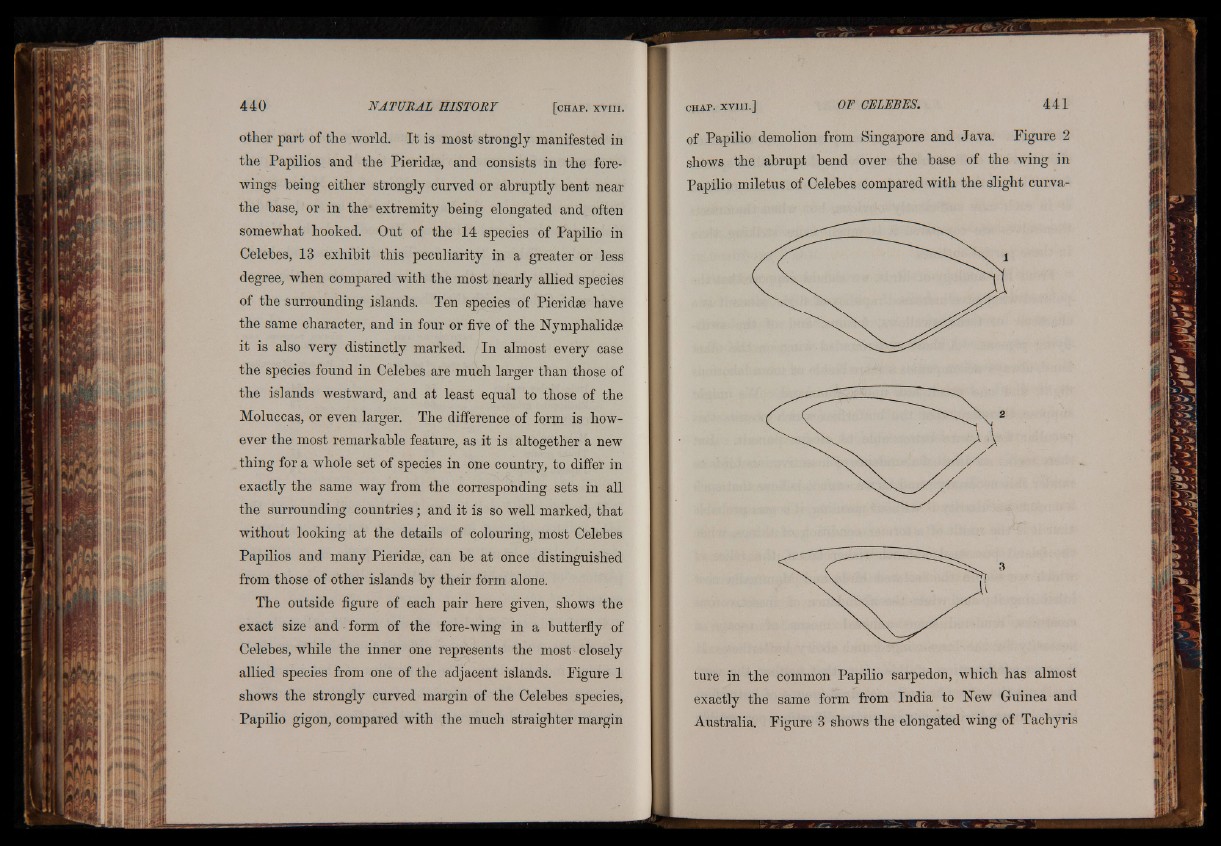
other part of the world. It is most strongly manifested in
the Papilios and the Pieridse, and consists in the forewings
being either strongly curved or abruptly bent near
the base, or in the extremity being elongated and often
somewhat hooked. Out of the 14 species of Papilio in
Celebes, 13 exhibit this peculiarity in a greater or less
degree, when compared with the most nearly allied species
of the surrounding islands. Ten species of Pieridae have
the same character, and in four or fiye of the Nymphalidse
it is also very distinctly marked. In almost every case
the species found in Celebes are much larger than those of
the islands westward, and at least equal to those of the
Moluccas, or even larger. The difference of form is however
the most remarkable feature, as it is altogether a new
. thing for a whole set of species in one country, to differ in
exactly the same way from the corresponding sets in all
the surrounding countries ; and it is so well marked, that
without looking at the details of colouring, most Celebes
Papilios and many Pieridse, can be at once distinguished
from those of other islands by their form alone.
The outside figure of each pair here given, shows the
exact size and form of the fore-wing in a butterfly of
Celebes, while the inner one represents the most closely
allied species from one of the adjacent islands. Figure 1
shows the strongly curved margin of the Celebes species,
Papilio gigon, compared with the much straighter margin
of Papilio demolion from Singapore and Java. Figure 2
shows the abrupt bend over the base of the wing in
Papilio miletus of Celebes compared with the slight curvature
in the common Papilio sarpedon, which has almost
exactly the same form from India to New Guinea and
Australia. Figure 3 shows the elongated wing of Tachyris